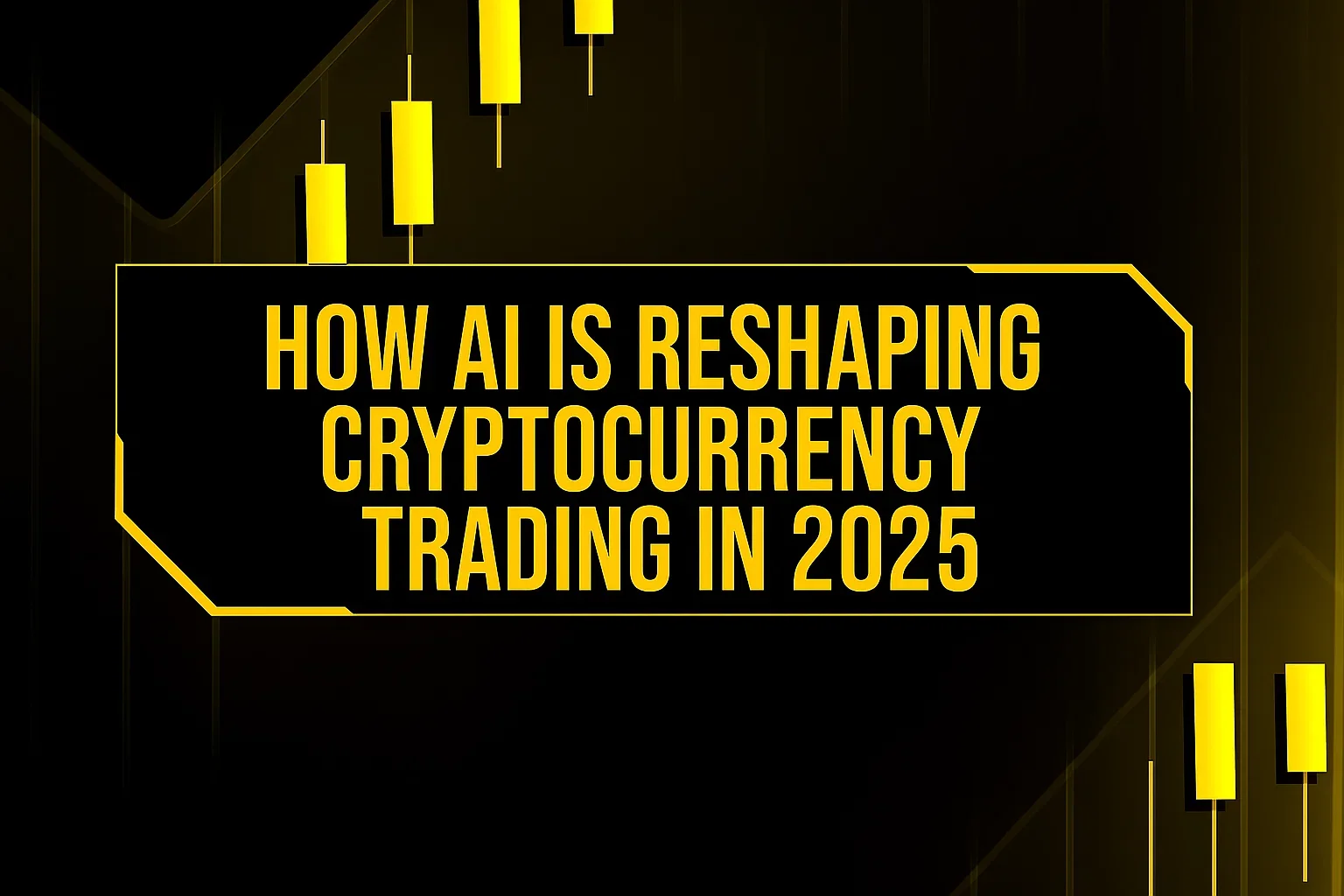Table of Contents
We’ve been talking about AI in trading for years now. But 2025 feels different.
It’s not hype anymore. Walk into any serious trading operation—doesn’t matter if it’s a hedge fund or some guy running strategies from his apartment—and AI is already there, quietly doing the work that used to take teams of analysts weeks to complete.
The crypto markets have always been brutal. Volatile, 24/7, driven by narratives that shift faster than you can refresh Twitter. Human traders burn out trying to keep up. We need sleep. We miss signals. We let emotions cloud our judgment when we’re down 20% on a position.
AI doesn’t have those problems.
And honestly? The gap between traders using AI and those who aren’t is becoming a chasm. If you’re still making decisions purely off gut feeling and a few TradingView indicators, you’re bringing a knife to a gunfight.
AI-Powered Analytics: Seeing Beyond the Chart
Here’s where it gets interesting.
Traditional analysis has always been split. You’ve got your technical traders, staring at candlesticks and RSI like they’re reading tea leaves. Then you’ve got fundamental analysts, buried in whitepapers and tokenomics spreadsheets. Two different worlds.
AI just… collapsed that distinction.
Modern algorithms can inhale entire datasets that would take humans months to parse. We’re talking millions of data points. Social media sentiment across Reddit, Twitter, Discord, Telegram—every corner where crypto conversations happen. GitHub commits to see if developers are actually building or if the project’s dying. News feeds from hundreds of sources in dozens of languages. On-chain metrics showing exactly where the whales are moving their money.
All of it processed simultaneously. All of it weighted and correlated in real-time.
I saw an AI system flag a potential breakout on a mid-cap altcoin three days before it pumped 40%. How? It caught the pattern: on-chain transaction volume spiking, developer activity accelerating on GitHub, and a sudden shift in social sentiment from skeptical to cautiously optimistic. Then a partnership announcement hit that the AI had essentially predicted based on the data signatures it was seeing.
No human analyst would’ve connected those dots that fast. Maybe not at all.
This is why understanding Fundamental Analysis still matters, though. The AI isn’t magic—it’s interpreting the same fundamental data points that deep research would uncover. Transaction volume, development activity, market perception… these are fundamentals. The AI just processes them at inhuman speed and identifies correlations we’d miss.
You need to understand what the AI is looking at, even if you can’t process it all yourself. Otherwise you’re just blindly following signals you don’t understand. That’s how you get wrecked when the model breaks down.
Adaptive Strategies and Automated Execution
Remember the trading bots from 2017?
Simple things. If RSI drops below 30, buy. If price crosses the 50-day MA, sell. Rigid rules that worked until they didn’t. The market would shift and they’d just keep executing the same strategy, bleeding capital.
Machine learning changed everything.
These new systems actually learn. They’re watching what works and what doesn’t, constantly. In a trending bull market, they’ll ride momentum strategies, letting winners run. When volatility compresses and the market goes sideways, they automatically shift to range-trading approaches—buying support, selling resistance.
No human intervention needed.
The execution side is equally impressive. AI algorithms can split large orders across multiple exchanges, timing each piece to minimize slippage. They’re finding liquidity in dark pools, executing at optimal times based on historical volume patterns. In a market that never sleeps, they’re taking advantage of inefficiencies during Asian trading hours that most Western traders are literally sleeping through.
Cross-asset analysis is where it gets really powerful. The best AI systems aren’t just looking at crypto in isolation. They’re tracking correlations with forex, commodities, traditional equities. When the DXY spikes, certain crypto pairs react predictably. When crude oil moves, energy tokens follow patterns. AI catches these relationships and trades them.
The effectiveness of these strategies is often enhanced when they can operate across a diverse set of assets. Platforms offering access to a wide array of markets, including crypto, forex, and commodities, provide a richer dataset for AI to analyze cross-asset correlations, further refining its predictive capabilities. The YWO trading platform is an example of an ecosystem designed to support such sophisticated, multi-asset strategies.
I’m not shilling here, I’m just pointing out that the platforms themselves matter. You can have the smartest AI in the world, but if it only has access to three crypto pairs on a single exchange, you’re handicapping it.
The Human Element: Oversight and Integration
Look, I need to pump the brakes on the AI optimism for a second.
Because despite everything I just said, the human trader isn’t obsolete. Far from it. The role is just… different now.
Think of it like this: you’re not the pilot anymore, you’re air traffic control. You’re setting strategic goals, defining risk parameters, monitoring system performance. The AI executes, but you’re deciding what battles to fight.
And here’s the critical part—you need to understand what the AI is doing. Not at a code level necessarily, but conceptually. What signals is it prioritizing? How is it managing risk? What are its failure modes?
Because AI models do fail. They’re trained on historical data, which means they’re fundamentally backward-looking. When something genuinely novel happens—a regulatory shock, a major exchange hack, some black swan event—the AI might respond in completely unexpected ways.
I watched an AI system have a minor meltdown during a flash crash last year. It kept trying to “buy the dip” as prices cratered, assuming mean reversion. Totally logical based on its training data. Except the crash was caused by a critical smart contract exploit that fundamentally changed the asset’s value proposition. The AI didn’t understand that context. It was just seeing “price down = buying opportunity.”
A human trader with oversight would’ve killed that strategy immediately.
The black box problem is real too. Some of these deep learning models are so complex that even their creators can’t fully explain why they make specific decisions. You’re trusting a system you don’t entirely understand to manage real capital. That requires a certain level of skepticism, constant monitoring, and the willingness to override the AI when something smells wrong.
The future isn’t AI replacing traders. It’s AI augmenting traders who know how to use it properly.
You bring the strategic thinking, the contextual understanding, the judgment calls in ambiguous situations. The AI brings computational power, tireless vigilance, and the ability to process information at scale. Together? That’s a competitive edge that’s hard to beat.
Where This Goes Next
We’re still early in this transition. Most retail traders aren’t using sophisticated AI yet. They’re still relying on the same technical indicators that have been around for decades, making the same emotional mistakes that have always plagued trading.
But that’s changing fast. The tools are becoming more accessible. The educational resources are improving. The infrastructure is maturing.
Within a year or two, AI-assisted trading is going to be table stakes. Not using it will be like refusing to use the internet for research in 2010—technically possible, but you’re volunteering to be at a massive disadvantage.
The traders who thrive are the ones who start learning these systems now. Understanding how AI processes data, what its strengths and limitations are, how to integrate it into a robust trading framework.
Because the market doesn’t care about fairness. It doesn’t wait for you to catch up. It just rewards whoever has the better information and the faster execution.
Right now, increasingly, that’s the traders with AI on their side.
Crypto Ping Pong Digest
Trash style news. You will definitely like














